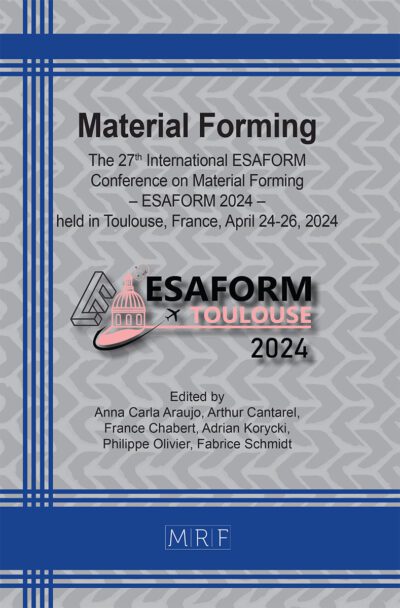A. AMMARI, A. DEKAYIR, M.A.DOS-BENNANI
Abstract. The objective of this study is to conduct a mineralogical and chemical characterization of the mortars Roman archaeological site of Volubilis to rebuild spare mortars for restoration. Samples of mortar, broken tile palate garden, and pavement mosaic Falavius Germanus. The analysis by X-ray diffraction reveals that the coarse mortar Flavius Germanus is made of quartz and calcite, with feldspar and probably, mica and dolomite in small amounts. The binder end is formed calcite and quartz. However, the broken tile mortar is formed by coarse particles, clay base mixed with a binder phase dominated by calcite. These results allowed us to reformulate spare mortars for the restoration of damaged Roman mosaics, the mortars are made up by 63.6% of lime and 36.4% of sand(with (4.19% of large grain, 71, 04% of coarse sand, 24.22%, of fine sand and 0.55% fines parts). The performance of these mortars was tested by mechanical testing.
Keywords
Mortar Mosaic, Characterization, Catering, Mechanical Testing, Volubilis
Published online 12/10/2016, 4 pages
Copyright © 2016 by the author(s)
Published under license by Materials Research Forum LLC., Millersville PA, USA
Citation: A. AMMARI, A. DEKAYIR, M.A.DOS-BENNANI, ‘Mineralogical, chemical and textural study of roman mortars for their restoration case of the historic site of Volubilis (Morocco)’, Materials Research Proceedings, Vol. 1, pp 49-52, 2016
DOI: https://dx.doi.org/10.21741/9781945291197-13
The article was published as article 13 of the book Dielectric Materials and Applications
References
[1] F. Davidovits, Les Mortiers de pouzzolanes artificielles chez Vitruve évolution et historique architecturale, Mémoire de D.E.A, Université Paris X-Nanterre, 1993.
[2] Dekayir, M.Amouric, J.Olives, C.Parron, A. Nadiri, A. Chergui, M. A. El Hajraoui, Structure and characterisation of the materials used in the building of Roman mosaics in Volubilis City (Morocco), C. R. Géoscience, vol.336, 2004, pp. 1061–1070.
[3] K.Bouassria, A.Ammari, A.Tayyibi, H.Bouabid, J.Zerouaoui,M. Cherraj, S. CharifD’ouazzane, The effect of lime on alumino-silicate and cement on the behavior of compressed earth blocks, J. Mater. Environ. Sci. 6 (12) (2015) 3430-3435.
[4] H. Bouabid, K. .Zine-dine, M. El Kortbi, S. Charif d’Ouazzane, O. Fassi-Fehri, Comportement mécanique non linéaire du mortier de terre stabilisée, Rev. Mar. Gén. Civ., n° 81, 1999, pp : 16-19.
[5] Hakimi, N. Yamani, H. Ouissi, Résultats d’essais de résistance mécanique sur échantillon de terre comprimée, Matériaux et Construction, Vol.29, 1996, pp. 600-608.
[6] H.B. Nagaraj, M.V. Sravan, T.G. Arun, K.S. Jagadish, Role of lime with cement in long-term strength of Compressed Stabilized Earth Blocks, International Journal of Sustainable Built Environment (2014) 3, 54–61. https://dx.doi.org/10.1016/j.ijsbe.2014.03.001













